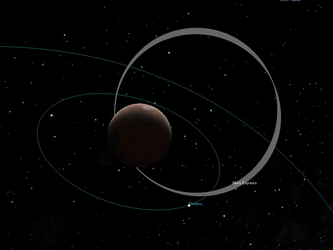Accept all cookies Accept only essential cookies See our Cookie Notice

About ESA
The European Space Agency (ESA) is Europe’s gateway to space. Its mission is to shape the development of Europe’s space capability and ensure that investment in space continues to deliver benefits to the citizens of Europe and the world.
Highlights
ESA - United space in Europe
This is ESA ESA facts Member States & Cooperating States Funding Director General Top management For Member State Delegations European vision European Space Policy ESA & EU Space Councils Responsibility & Sustainability Annual Report Calendar of meetings Corporate newsEstablishments & sites
ESA Headquarters ESA ESTEC ESA ESOC ESA ESRIN ESA EAC ESA ESAC Europe's Spaceport ESA ESEC ESA ECSAT Brussels Office Washington OfficeWorking with ESA
Business with ESA ESA Commercialisation Gateway Law at ESA Careers Cyber resilience at ESA IT at ESA Newsroom Partnerships Merchandising Licence Education Open Space Innovation Platform Integrity and Reporting Administrative Tribunal Health and SafetyMore about ESA
History ESA Historical Archives Exhibitions Publications Art & Culture ESA Merchandise Kids Diversity ESA Brand Centre ESA ChampionsLatest
Space in Member States
Find out more about space activities in our 23 Member States, and understand how ESA works together with their national agencies, institutions and organisations.
Science & Exploration
Exploring our Solar System and unlocking the secrets of the Universe
Go to topicAstronauts
Missions
Juice Euclid Webb Solar Orbiter BepiColombo Gaia ExoMars Cheops Exoplanet missions More missionsActivities
International Space Station Orion service module Gateway Concordia Caves & Pangaea BenefitsLatest
Space Safety
Protecting life and infrastructure on Earth and in orbit
Go to topicAsteroids
Asteroids and Planetary Defence Asteroid danger explained Flyeye telescope: asteroid detection Hera mission: asteroid deflection Near-Earth Object Coordination CentreSpace junk
About space debris Space debris by the numbers Space Environment Report In space refuelling, refurbishing and removingSafety from space
Clean Space ecodesign Zero Debris Technologies Space for Earth Supporting Sustainable DevelopmentLatest
Applications
Using space to benefit citizens and meet future challenges on Earth
Go to topicObserving the Earth
Observing the Earth Future EO Copernicus Meteorology Space for our climate Satellite missionsCommercialisation
ESA Commercialisation Gateway Open Space Innovation Platform Business Incubation ESA Space SolutionsLatest
Enabling & Support
Making space accessible and developing the technologies for the future
Go to topicBuilding missions
Space Engineering and Technology Test centre Laboratories Concurrent Design Facility Preparing for the future Shaping the Future Discovery and Preparation Advanced Concepts TeamSpace transportation
Space Transportation Ariane Vega Space Rider Future space transportation Boost! Europe's Spaceport Launches from Europe's Spaceport from 2012Latest
Mars Express views Phobos phases
Thank you for liking
You have already liked this page, you can only like it once!
ESA’s Mars Express recently tracked Phobos as the moon passed in front of the spacecraft's camera, capturing detailed views of the small, irregularly shaped body at different angles and stages of the flyby. This sequence comprises 41 images taken by the High Resolution Stereo Camera’s Super Resolution Channel on 17 November 2019 during orbit 20 076, when Phobos passed Mars Express at a distance of roughly 2400 km. The images have a resolution of 21 m/pixel.
This opportunity allowed the spacecraft to capture many features across the moon’s surface; alongside a number of impact craters (including the large and prominent Stickney crater), one can see a number of linear marks and furrows.
The movie shows Phobos at a number of angles – the moon can be seen rotating, and slowly lightens up before it begins to darken again. The slight up-and-down motion of the moon is caused by the oscillation of Mars Express. It nicely illustrates the concept of ‘phase angle’: the angle between a light source (in this case, the Sun) and the observer (Mars Express’ HRSC), as viewed from the target object itself (Phobos). The initial phase angle is 17 degrees, drops to almost 0 degrees mid-way through (0.92, when Phobos is at its brightest), and then rises to 15 degrees by the end of the animation.
This arrangement – of the Sun, Mars Express and Phobos where the latter is observed at a phase angle of near zero degrees – is very rare, and happens only three times a year at most. Other chances to achieve a phase angle of under one will not occur until April and then September of 2020. As such, Mars Express takes every opportunity to view this small and intriguing moon from this angle, to shed light on its properties, behaviour, possible origin, orbital characteristics and location in space – and to probe its potential as a mission destination.
-
CREDIT
ESA/DLR/FU Berlin -
LICENCE
CC BY-SA 3.0 IGO or ESA Standard Licence
(content can be used under either licence)
-
Closed captions available Captions and subtitles are available (automatically generated by YouTube) - select your language using the YouTube player controls. A non-YouTube version is available using the 'download' button above.
-
Animation
-
-
-
-

Phase angle changes

Phobos phase angles explained

Phobos surface sequence

Artist's impression of Mars Express and Phobos















 Germany
Germany
 Austria
Austria
 Belgium
Belgium
 Denmark
Denmark
 Spain
Spain
 Estonia
Estonia
 Finland
Finland
 France
France
 Greece
Greece
 Hungary
Hungary
 Ireland
Ireland
 Italy
Italy
 Luxembourg
Luxembourg
 Norway
Norway
 The Netherlands
The Netherlands
 Poland
Poland
 Portugal
Portugal
 Czechia
Czechia
 Romania
Romania
 United Kingdom
United Kingdom
 Slovenia
Slovenia
 Sweden
Sweden
 Switzerland
Switzerland


























